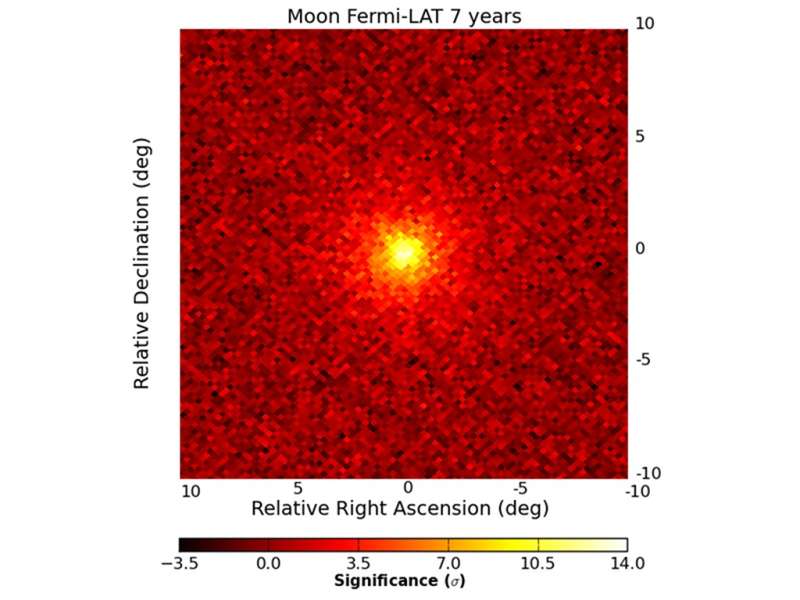Fermi s Gamma-ray Moon

Explanation:
If you could only see
gamma-rays,
photons with up to a
billion
or more times the energy of visible light,
the Moon would be brighter than the Sun!
That startling notion underlies this novel image of the Moon, based
on data collected by the
Fermi Gamma-ray Space
Telescope's
Large Area Telescope (LAT) instrument during its first seven years
of operation (2008-2015).
Fermi's gamma-ray vision doesn't distinguish details on the lunar
surface, but a gamma-ray glow consistent with
the Moon's size and position is clearly found at the center of the
false color map.
The brightest pixels correspond to the most significant detections
of lunar gamma-rays.
Why is the gamma-ray
Moon so bright?
High-energy charged particles streaming through the Solar System
known as
cosmic rays
constantly bombard the lunar surface, unprotected by a magnetic field,
generating the gamma-ray glow.
Because the cosmic rays come from all sides, the gamma-ray
Moon is always full and does not go through phases.
The first gamma-ray image
of the Moon was captured by the EGRET instrument onboard the
Compton
Gamma-ray Observatory, launched 25 years ago.
Authors & editors:
Robert Nemiroff
(MTU) &
Jerry Bonnell
(USRA)
NASA Web Site Statements, Warnings,
and Disclaimers
NASA Official: Jay Norris.
Specific
rights apply.
A service of:
LHEA at
NASA /
GSFC
& Michigan Tech. U.

